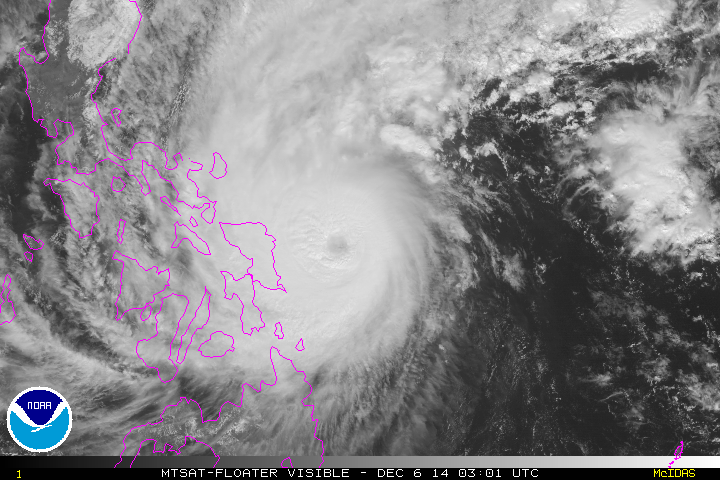Jaz is a designer and copywriter fueled by coffee. If…
If you think about it, the winds and rains are not the scariest part of a typhoon in the Philippines.
It’s the chaos, the possibility of casualties, the likelihood of disease, and poor response that aggravates all these problems. That’s why it pays to be prepared with safety measures during typhoons. If every member of the family knows what to do, they have a higher chance making it out of the storm, safe and sound.
When is the Philippine Typhoon Season?
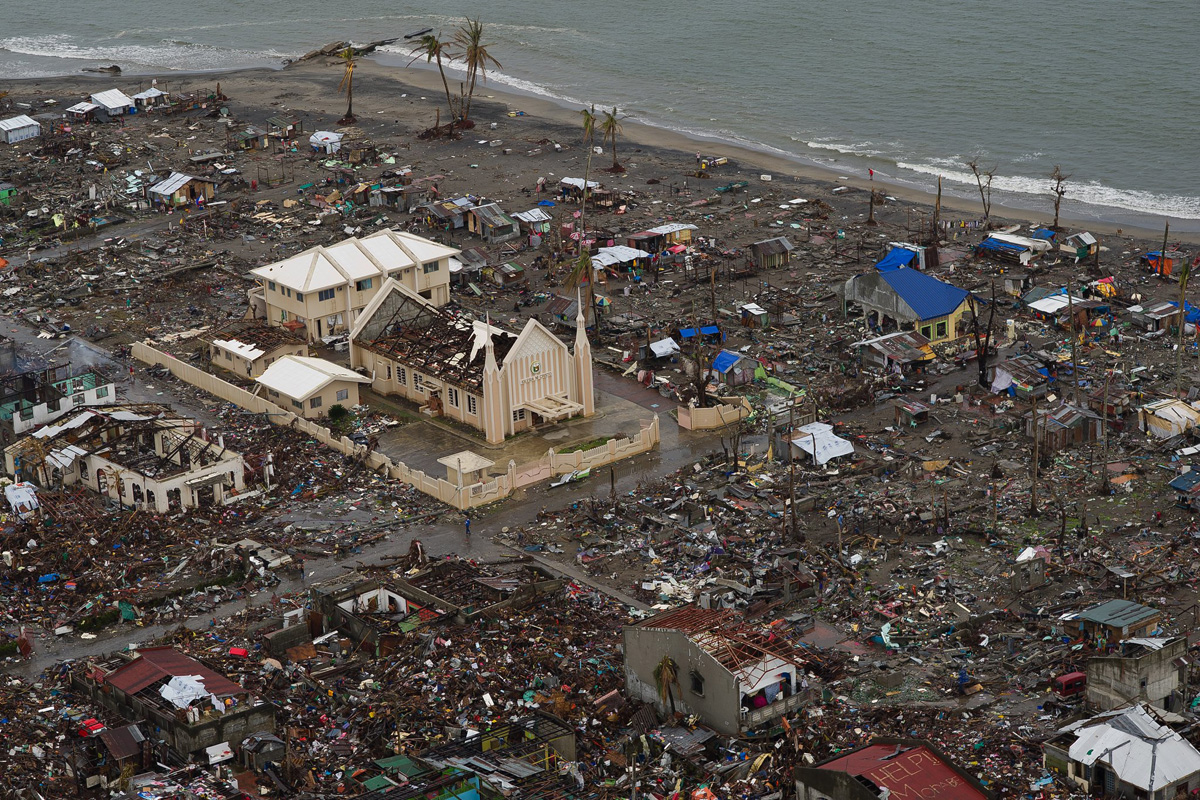
Be on guard during the official Philippine typhoon season.
According to PAG-ASA, the peak of typhoon season runs from July to October, when about 70 percent of all typhoons develop. During this window, Filipinos can expect up to three tropical cyclones per month.
- Typhoon. If the maximum sustained winds fall between 118-220kph, the tropical cyclone is considered a typhoon.
- Super Typhoon. If the maximum sustained winds exceed 220kph, the tropical cyclone is classified as a super typhoon. Think Haiyan (Yolanda) and Goni (Rolly).
By the very nature of its geographical location, the Philippines is prone to typhoons. That’s why typhoon preparedness is essential in our country. Being prepared is your family’s best defense.
What to Do Before a Typhoon
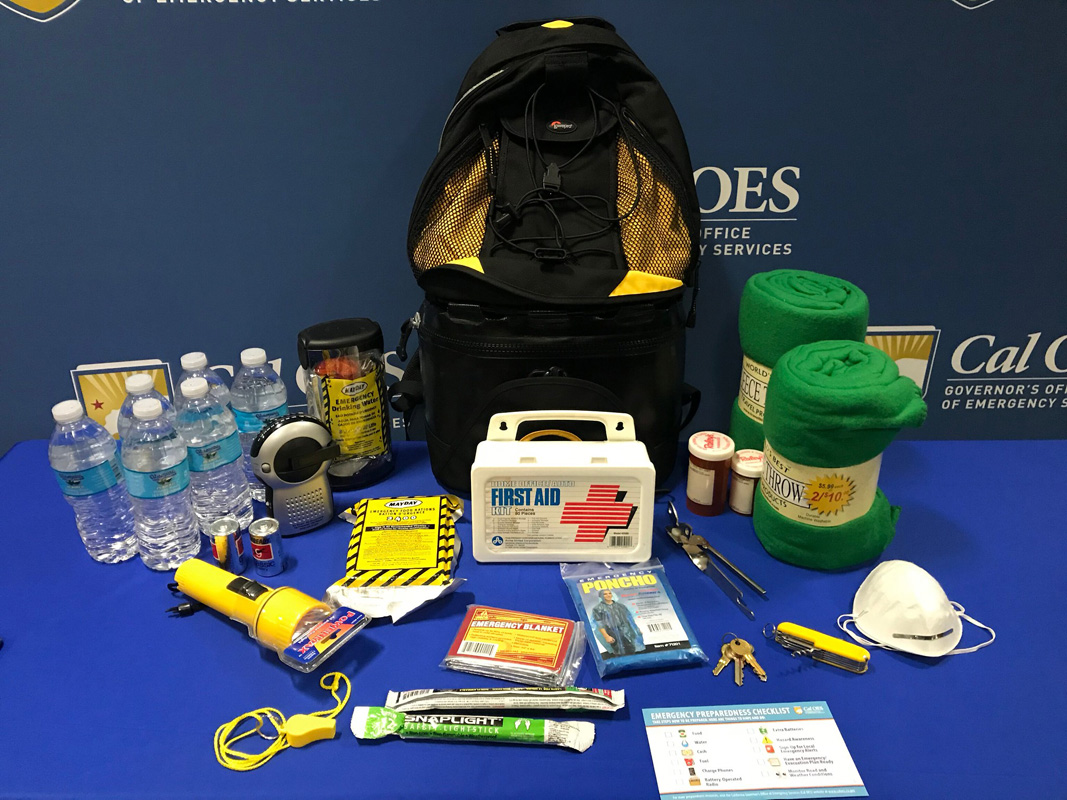
Before a typhoon hits, it’s best to ready your equipment in case of emergencies. Use these typhoon safety tips as your guide on what to prepare.
Assemble Your Supplies
Stock your emergency kit. Set aside an “emergency pack” containing the following:
- Flashlight
- Multi-purpose tool like a Swiss knife
- Extra batteries
- First aid kit with a full complement of bandages and medicine and other medical supplies to last your family up to a week (especially if someone has a condition which requires daily medication).
- Face masks and other COVID-19 essentials
- Sanitation and hygiene items (you don’t want to run out of toilet paper when there’s a chance the water could be shut off)
- A laminated card listing family and emergency contact information
- Cell phone (make sure it’s loaded if you’re on a prepaid plan)
- Charger
- Extra cash.
Secure important documents. Do you live in a flood-prone area? If so, you can start placing your belongings in a more secure area before the flood hits. Make sure to secure important documents such as your birth certificate, your passport, your voter’s ID, and other government IDs in waterproof canisters. You can stash them in Ziplock bags or other plastic containers to ensure that they won’t get soaked.
Check and top up your food and water supplies. Prepare a good supply of:
- Non-perishable, easy-to-prepare food
- Potable water you won’t need to access the tap for
- Utensils for food preparation
- Covered pails filled with water in your bathroom (in case the water gets turned off in your area)
Prepare Your Home
- Cover your windows and draw your blinds or curtains. If you live in an area in the path of the storm, the winds could be strong enough to carry heavy debris. If these slam onto your window, they could break the glass and blow the shards into your home.
Board up your windows or cover them with cardboard. Make sure they’re sealed well so that water and debris won’t be able to go in. Draw your blinds and curtains, too.
- Check your house’s drainage system for debris. An efficient drain reduces the chances of leaks and flooding. Since the Philippines regularly experiences the rainy season, it’s important to maintain your home’s drainage system regardless of the weather. This extra precautionary can save you from possible issues during floods.
- Secure valuables and electronics in upper levels. Anything you don’t want to risk immersing in water should be moved to a higher level, preferably an upper floor. Don’t stack things too high or stack heavy items above shoulder level. Doing so can risk your items falling over and potentially injuring someone.
Prepare Communications
- Load a radio with batteries. In the Philippines, radio stations are the most reliable source of news during a typhoon. Make sure your radio isn’t reliant on roof-mounted satellites or cables that could be damaged by the storm. It’s best to invest in portable radios you can use during emergencies like storms.
- Charge up your power banks and emergency lights. Chances are you’ll lose power when the storm hits your area. And even if it doesn’t, you may still experience power outages afterward. So, charge everything that can be charged before the storm hits. It’s important that you have communication devices at hand, so you can keep tabs on typhoon updates and get in touch with your loved ones.
- Identify an alternate safe area. Pinpoint safe places to go to in case you need to evacuate. Make sure everyone in your family knows what to do during typhoon evacuation.
And if you are ever caught out in a storm, determine where you’re most likely to spend the night, like a friend’s house nearby. As a courtesy, ask them ahead if it’s all right to stay with them until the storm blows over.
During a Typhoon
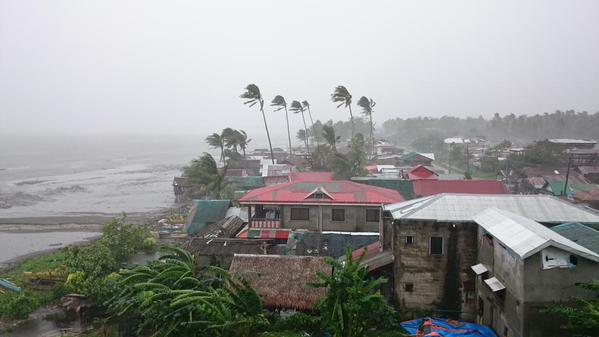
Once the typhoon hits, there are several measures you need to keep in mind. Remember, just because you’ve already prepared equipment and listed alternative plans, there are still a lot of possible dangers during a storm. It’s important to take these extra safety tips for typhoons and set them as your family protocols.
In the Household
- Stay inside as much as possible. Your home is the safest place to be; don’t go out unless extremely necessary. Visibility outside is generally poor, the roads are slippery, and the chances of accidents are high. It’s also likely that traffic is a nightmare, and some places might get flooded, so it’s better if you stay indoors.
Don’t leave your pets to the mercy of the elements. Let them stay inside with you. - Keep everyone in your household calm. Panic-stricken people make more mistakes and cause more injuries. So, before the storm comes, it’s crucial that your household understands all the safety measures you’ve prepared. That way, everyone can remain calm. Other than that, family pets are typically sensitive to their owner’s behavior. They are likely to take their cue from you; if your family is calm, your pets will be too.
- Monitor local radio. There should always be a designated household member monitoring evacuation warnings and other typhoon updates like unpassable roads or relief zones. Staying informed can let you know of the state of your city and surrounding areas. It lets you adjust your emergency plans based on the current state of the typhoon. The news also covers which parts of the Philippines bear the brunt of the storm informing you of which cities to avoid.
Manage Supplies
- Be smart about food and water consumption. Consume perishables first as you never know when the electricity might be cut. Depending on the severity of the typhoon, set clear food and water rations among your family members. That way, your supplies can last in case the storm stays longer than anticipated.
If the water is turned off in your area, use your reserves responsibly. Instead of bathing, do a sponge bath. - Only use your mobile phone for important things. The power could go out at any time during a typhoon and may not be restored for days. But since communications and updates are invaluable during a storm, you have to conserve your phone’s batteries. This is especially important if you have a smartphone that rarely lasts a day without charging. Turn off non-essential functions like Wi-Fi, Bluetooth, and cellular data, and avoid playing games no matter how boring getting cooped up in the house may be.
Manage through Floods
- If it starts to flood, turn off the main power. You don’t want live outlets that could be waterlogged and charge the floodwaters in your home. As a precaution, make sure all the adults know how to turn off the main power. If there’s an option to turn off power on the ground level while maintaining power on upper levels, all the better.
- If you must wade through flood waters, wash yourself with clean water as soon as possible. If you have open wounds or have sustained some while walking in the floods, disinfect and treat them right away. Flood water is generally filled with different types of bacteria. If you don’t wash it off right away, you can put yourself at risk for bacterial infections.
- Be wary of live wires or water-logged outlets. These could charge the floodwaters in the area and electrocute you. So, if you see that your ground floor is flooded above outlet level and you weren’t able to turn off the power to your home, don’t venture into the water even if this is below knee level. Find another way to drain your water or wear shock and waterproof boots to walk around in. Keep your family members away from flooded areas, especially those with weak hearts.
- Immediately tend to any injuries. Use the items in the emergency kit to tend to anyone who gets cuts or bruises from falling items or flying debris. Make sure to apply basic first-aid measures to stop any bleeding. And if anyone gets hit in the head, watch for symptoms of a concussion. Once it’s okay to go outside, deliver them to the nearest hospital or clinic. Treat head injuries with the utmost importance.
After a Typhoon
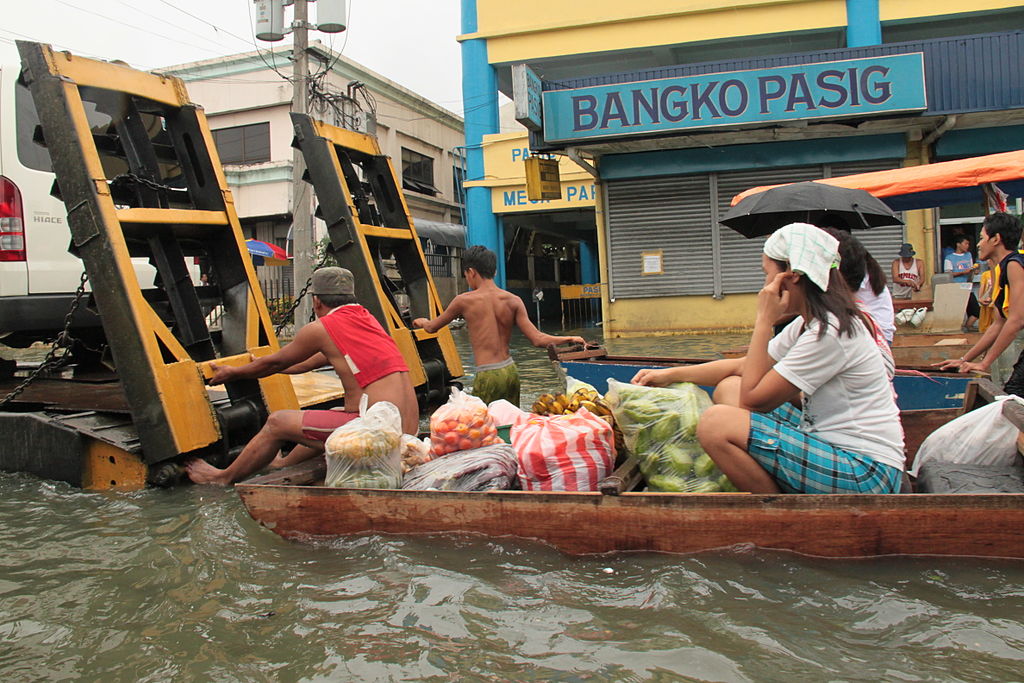
Once the storm has passed, be wary of its aftermath. You never know what can happen during high-level typhoons, and the possible damages in your area can be more severe than what you originally thought. Regardless, use these precautionary measures after typhoons to ensure your safety.
- Continue to monitor news sites, radio stations, or TV channels. This will keep you abreast of what roads are passable, what areas of the Philippines are still at risk, the current strength of the typhoon, and so on.
- Wear protective gear while dealing with debris. You don’t want to risk cutting yourself on rusty nails or pieces of tin from roofs or anything like that, so make sure you wear thick gloves (garden gloves should come in handy) when clearing your home of debris. You should also wear sturdy boots. If you can, avoid wearing tank tops or shorts as you clear your home. That way, you reduce the risks of infected cuts.
- Check for food or water contamination. If the power fails, throw out anything in your fridge that might have gone bad. Check your supply of potable water and throw out anything that’s been exposed to rainwater.
- Dump water that may have accumulated in containers like pots, cans, etc. Mosquitoes swarm after a storm. Don’t give them possible breeding grounds around your home. Clear anything that might hold stagnant water.
- Run a check on electrical appliances before using them. Electrocution is a real risk in the aftermath of a typhoon — and not many people know what to do. So have an electrician check the wiring in your home, as well as household appliances. Also, be sure that any electrical devices are thoroughly dried out before being used.
Stay safe, everyone!
What's Your Reaction?
Jaz is a designer and copywriter fueled by coffee. If there was one thing you need to know about her, it’s that out of all desserts, strawberry ice cream prevails.

